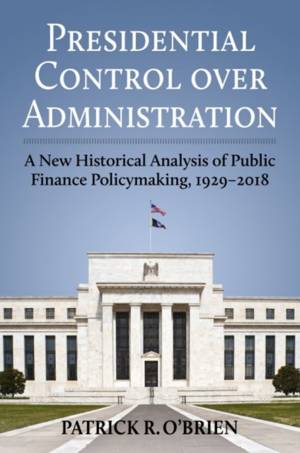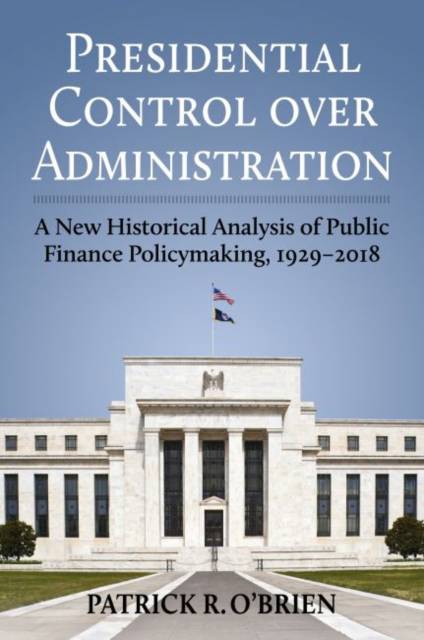
- Retrait gratuit dans votre magasin Club
- 7.000.000 titres dans notre catalogue
- Payer en toute sécurité
- Toujours un magasin près de chez vous
- Retrait gratuit dans votre magasin Club
- 7.000.0000 titres dans notre catalogue
- Payer en toute sécurité
- Toujours un magasin près de chez vous
Presidential Control Over Administration
A New Historical Analysis of Public Finance Policymaking, 1929-2018
Patrick Obrien
101,95 €
+ 203 points
Description
The US Constitution recognizes the president as the sole legal head of the executive branch. Despite this constitutional authority, the president's actual control over administration varies significantly in practice from one president to the next. Presidential Control over Administration provides a new approach for studying the presidency and policymaking that centers on this critical and often overlooked historical variable. To explain the different configurations of presidential control over administration that recur throughout history--collapse, innovation, stabilization, and constraint--O'Brien develops a new theory that incorporates historical variation in a combination of key restrictions such as time, knowledge, and the structure of government as well as key incentives such as providing acceptable performance and implementing preferred policies. O'Brien then tests the argument by tracing the policymaking process in the domain of public finance across nearly a century of history, beginning with President Herbert Hoover during the Great Depression and ending with the first two years of the Trump presidency. Although the book focuses on historical variation in presidential control, especially during the New Deal era and the Reagan era, the theory and empirical analysis are highly relevant for recent incumbents. In particular, O'Brien shows that during the Great Recession and beyond the initial efforts of Presidents Barack Obama and Donald Trump to change the established course during a period of unified party control of the government were largely undercut by each president's limited control over administration. Presidential Control over Administration is a groundbreaking contribution to our understanding of the presidency and policymaking.
Spécifications
Parties prenantes
- Auteur(s) :
- Editeur:
Contenu
- Nombre de pages :
- 344
- Langue:
- Anglais
- Collection :
Caractéristiques
- EAN:
- 9780700632961
- Date de parution :
- 27-04-22
- Format:
- Livre relié
- Format numérique:
- Genaaid
- Dimensions :
- 160 mm x 236 mm
- Poids :
- 657 g

Les avis
Nous publions uniquement les avis qui respectent les conditions requises. Consultez nos conditions pour les avis.






